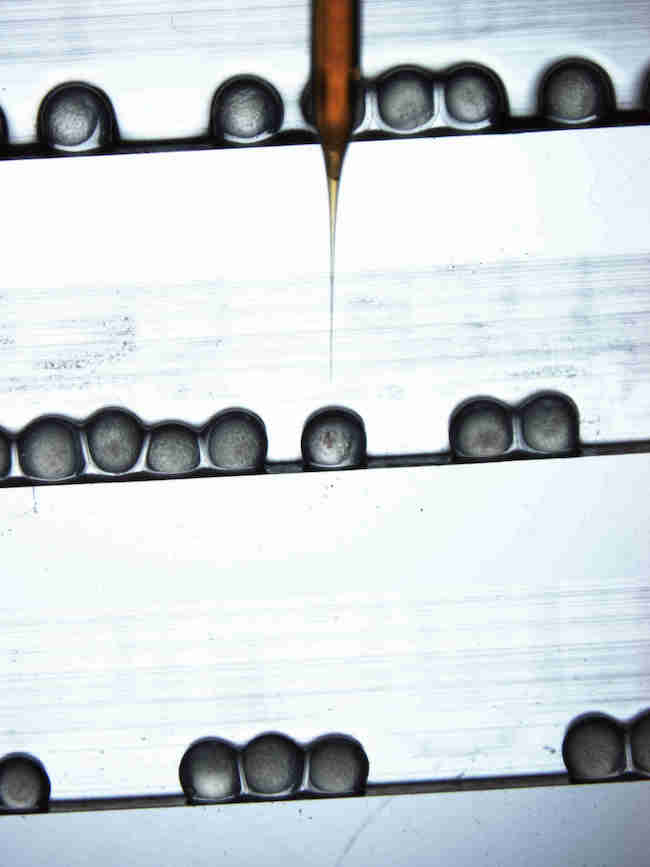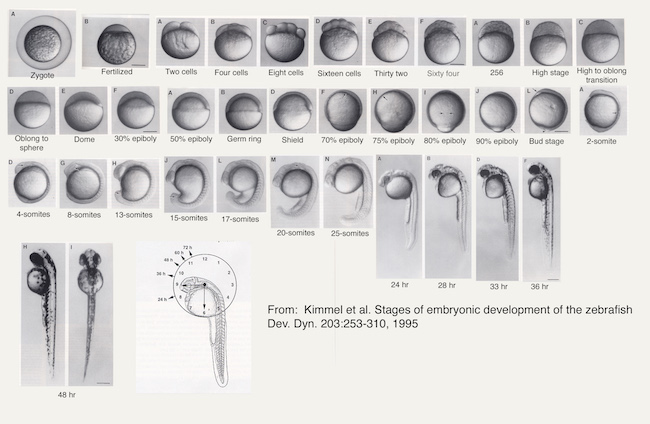To enable precision work, the OZF includes a microinjection suite of four stations comprising Leica or Nikon stereomicroscopes with WPI pressure injectors and Narashige micromanipulators.
Read more about WPI pressure injectors
Read more about Narashige micromanipulators
A P-97 Flaming/Brown type micropipette puller is available for making microinjection needles. The microinjection service includes the ability to digitally photograph material during microscopy.
Read more about the P-97 Flaming/Brown type micropipette puller

A big advantage of working with zebrafish is that they can be easily manipulated genetically by microinjection of early stage embryos. Microinjection technique uses solutions containing knockdown constructs (morpholinos) are injected into the blastomeres—The embryonic cells of the newly fertilised egg.
Morpholino delivery into the cytoplasm happens either through direct injection into the blastomere, or naturally via cell cytoplasmic movements after injection into the yolk. Following successful injection, quantification of embryonic phenotypes is assessed in order to learn more about the genetic mechanisms of development.
Check out the brief snapshot of zebrafish embryo stages below, or visit ZFIN to learn more details about these zebrafish developmental stages.
Learn more about zebrafish developmental stages at the ZFIN website
